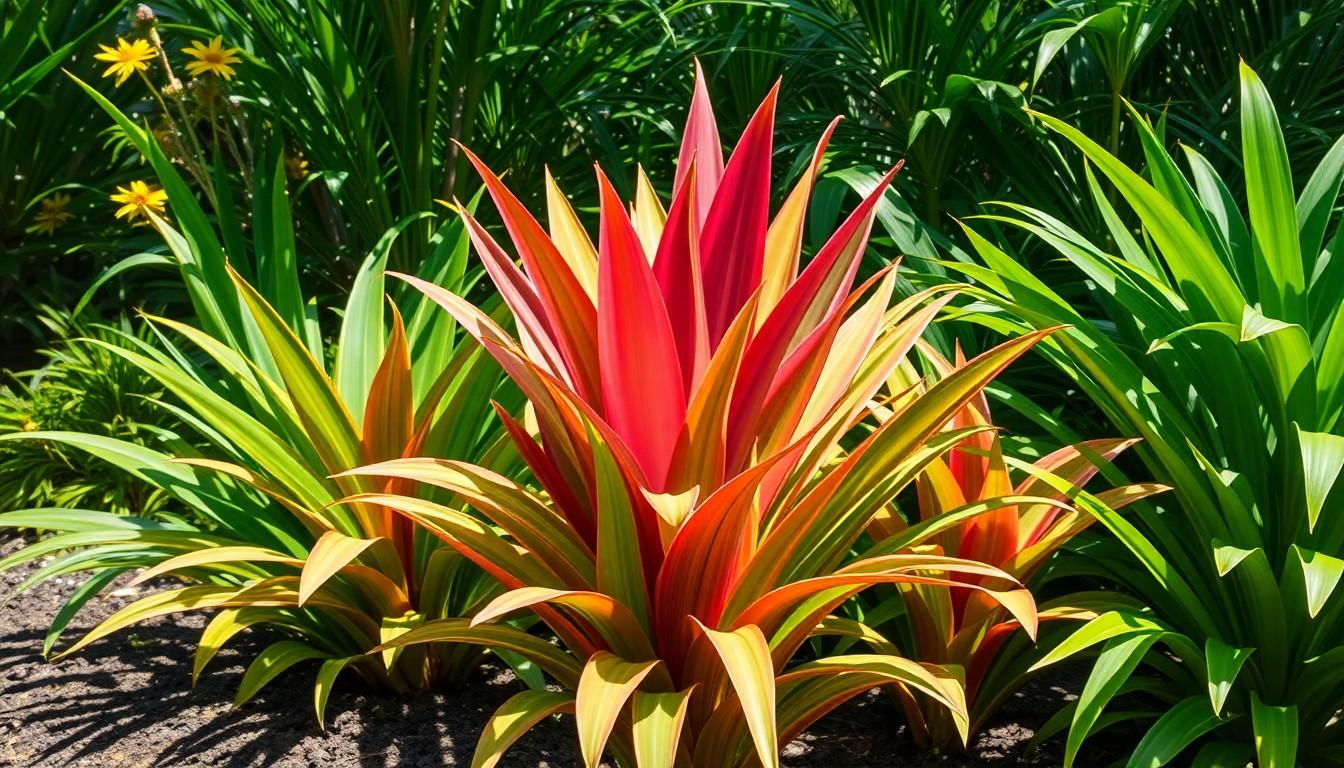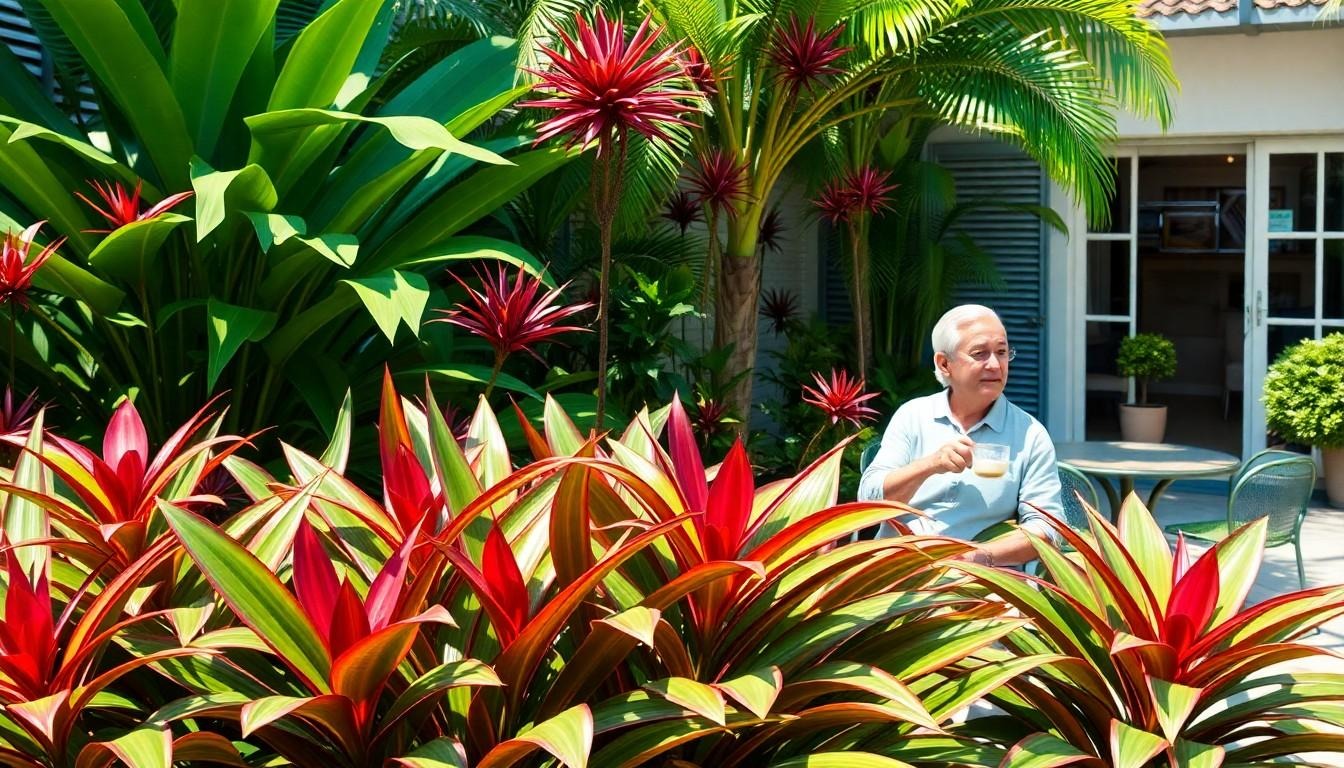Cordyline plants are the rock stars of the garden world, boasting vibrant colors and striking foliage that can make any outdoor space pop. They’re not just pretty faces; with the right care, they can thrive and bring a touch of tropical paradise right to your backyard. Imagine sipping your morning coffee while basking in the beauty of these stunning plants—sounds dreamy, right?
Cordyline Plant Care Outdoor
Cordyline plants stand out for their vibrant colors and unique shapes, making them popular choices in outdoor gardens. These tropical beauties thrive with the right care, adding a tropical allure to any environment.
Types of Cordyline Varieties
Several Cordyline varieties exist, each bringing distinct features to gardens. The most common include Cordyline fruticosa, known for its broad, colorful leaves. Cordyline australis offers a striking hardy option with its tall, narrow form. Some gardeners may prefer Cordyline terminalis, celebrated for its brilliant reds and purples. Other varieties, like Cordyline aspects, add texture and diversity. Selecting the right type enhances the overall aesthetic and can create a visually stunning garden.
Ideal Growing Conditions
Cordyline plants flourish best in bright, indirect sunlight. While they’re adaptable, they prefer well-draining soil with a slightly acidic to neutral pH. Maintaining consistent moisture is crucial, yet overwatering can lead to root rot. Moderate humidity levels suit these plants, reflecting their tropical origins. Protection from strong winds encourages healthy growth and prevents damage to the leaves. Ensuring these conditions promotes vibrant foliage and robust plants.
Preparing for Outdoor Planting

Successful outdoor planting of Cordyline plants depends on two primary factors: soil requirements and selecting the right location. These considerations ensure the plants thrive and showcase their vibrant beauty.
Soil Requirements
Cordyline plants prefer well-draining soil rich in organic matter. A mix of potting soil and compost offers excellent drainage and nutrients. Sandy loam serves as another good option, facilitating air circulation while retaining some moisture. Regularly testing the soil’s pH promotes the ideal range of 6.0 to 7.0. Incorporating compost enhances soil fertility and promotes healthy root development. Avoid clay-heavy soils that impede water drainage, as they may cause root rot.
Choosing the Right Location
Selecting the right location for Cordyline plants involves evaluating sunlight and wind conditions. These plants thrive best in bright, indirect sunlight to prevent sunburn on leaves. Positioning them near taller plants or structures provides necessary shade during the hottest parts of the day. Monitoring wind patterns is crucial, as strong winds can damage the leaves and overall structure. Ensure a sheltered area is chosen to protect them from harsh weather conditions, enhancing their growth potential.
Watering and Fertilization
Proper watering and fertilization ensure healthy growth for Cordyline plants. These elements contribute significantly to the plant’s vibrant appearance and overall vitality.
Watering Schedule
A consistent watering schedule proves essential for Cordyline plants. During the growing season, maintaining soil moisture works best for their health. Checking the top inch of soil helps determine when to water; if it feels dry, it’s time to add water. Early morning watering prevents evaporation and encourages healthy root development. In cooler months, reducing watering frequency allows the plant to rest while still keeping the soil slightly moist.
Nutrient Needs
Cordyline plants thrive on specific nutrients for optimal growth. Using a balanced fertilizer every four to six weeks during the growing season supports their vibrant foliage. Applying a slow-release fertilizer in early spring provides a steady supply of nutrients. Regularly checking soil pH keeps it balanced; aim for a range between 6.0 and 7.0. Incorporating organic matter or compost into the soil enhances nutrient retention and promotes effective growth.
Pruning and Maintenance
Pruning and maintenance of Cordyline plants plays a vital role in ensuring their health and aesthetics. Regular upkeep enhances growth and promotes vibrant foliage.
Best Pruning Practices
Removing dead or damaged leaves significantly improves the plant’s appearance and overall health. Pruning should occur in late winter or early spring before new growth emerges. Cutting back stems to encourage bushier growth is recommended, using sharp and clean tools to prevent injury. Aim for a 1/3 cut on stems to enhance airflow and light penetration. Regularly inspect the plant for any dead foliage and trim accordingly.
Pest and Disease Management
Monitoring Cordyline plants for pests like spider mites and scale insects ensures their longevity. Identifying signs of infestations early facilitates effective treatment. Applying insecticidal soap or neem oil proves effective in managing pest populations. Additionally, maintaining proper watering practices helps prevent fungal diseases. Ensuring good airflow around the plants minimizes humidity, as excess moisture can encourage rot. Regularly checking leaves and securing robust care promotes a vibrant and healthy plant.
Seasonal Care Tips
Cordyline plants need different care throughout the changing seasons. Understanding how to adjust their care ensures vibrant and healthy growth.
Summer Care
Summer brings the growing season for Cordyline plants. Water regularly and ensure the top inch of soil remains moist, preventing dehydration. Fertilize every four to six weeks using a balanced fertilizer to support robust growth. Regularly check for signs of pests like spider mites, as warmer temperatures may encourage infestations. Providing partial shade during the hottest part of the day helps reduce stress on the plants while promoting an ideal environment for flourishing foliage.
Winter Protection
Winter protection is crucial for Cordyline plants, particularly in colder zones. Insulate roots with mulch in late fall, helping maintain consistent soil temperature. Reduce watering to monthly, ensuring the soil stays relatively dry to prevent root rot. If temperatures drop below freezing, consider moving potted plants indoors to protect them from frost. Observe leaves for signs of damage, and promptly remove any that appear affected. Proper winter care helps prepare Cordyline plants for a healthier comeback in spring.

